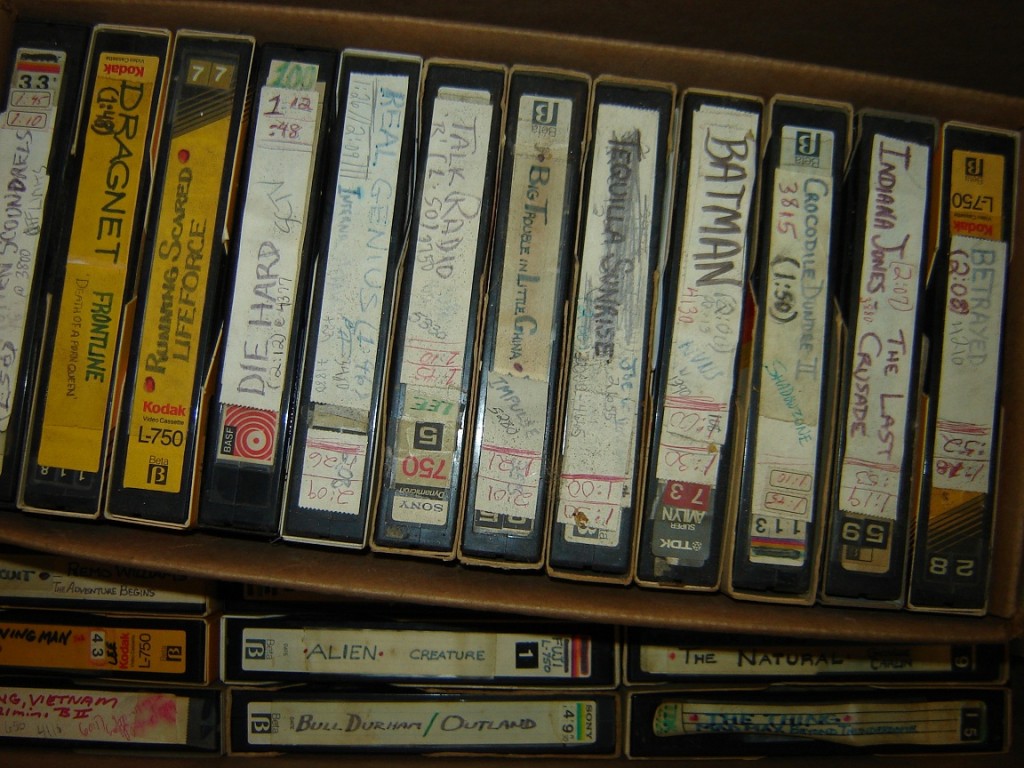There are few technological flops as memorable as Betamax. As notorious as the format was, I didn’t manage to pick up a Beta unit until about two years ago, and it ended up being broken anyway. For some reason, Beta holds a strange but prominent place in my collection of antiquated tech. All of the players I have seem to be subject to at least one flaw, all of the tapes I have are degraded, but there is some underlying charm that keeps me coming back.
Betamax was a video format released by Sony in 1975 based off of their previous format, U-Matic. Though it came out two years before VHS, Betamax did not end up anywhere near as popular. The video format wars ended with VHS being the victor, but why? Betamax had a head start, slightly higher video quality, and was backed by the Sony brand. What could go so very wrong? Betamax ended up crumbling due to a variety of seemingly small issues that became a major deterrent when combined. As I stated in the last article of this series, Sony kept the Betamax technology to itself while VHS was licensed off to seemingly any company that wanted it. While Beta was a superior format, consumers didn’t want the expensive product controlled by Sony, but something affordable from one of countless VHS manufacturers. Going off of their U-Matic design, Sony originally made the recording time of tapes a short 60 minutes. VHS initially came out with 120 minute recording time, giving more time for your blank tape and meaning you didn’t have to buy as many. While Sony would later market players with a slower recording speed (B-II) allowing 120 minutes per tape, this reduced picture quality and soon after VHS offered an HQ mode allowing for even higher quality at the same recording speed.
As years went by, Sony tried to regain their footing by enhancing the Beta format. In 1983, Hi-Fi units hit the shelves, offering high fidelity audio recording to consumers and professionals alike. In 1985 SuperBeta was released, offering higher resolution video and increased quality. Though both of these technological innovations predate their counterparts in VHS units, VHS already had the market share needed to succeed. It was too little too late. Sony would eventually make a move admitting defeat in 1988 when they started manufacturing VHS VCRs. Though they still claimed to be backing Betamax, marketing their competitor’s format was a mixed message to some and a final nail in the coffin to others.
Betamax continued to be manufactured well through the 1990′s, and the last Betamax player made by Sony was produced in 2002. New blank tapes are still being produced, and the format continues to be used by small circles of hobbyists and professionals. While Betamax might not have been the smash hit it could have been, it wasn’t all for naught. Betamax became subject to a lawsuit in 1984 regarding the legality of home videotaping, and this case was later cited in 2005 in a peer-to-peer software suit which ultimately agreed with the the decades earlier ruling of non-infringing uses of technology. Sony also learned from their mistakes from the Beta years when creating and marketing their Blu-ray format, which is now an industry standard. Without Betamax, many of the technological advancements of today may never have been fathomed. Even though Betamax can be equated to nothing more than a jogged memory, it had an interesting lifetime that should be rewound and re-watched.


